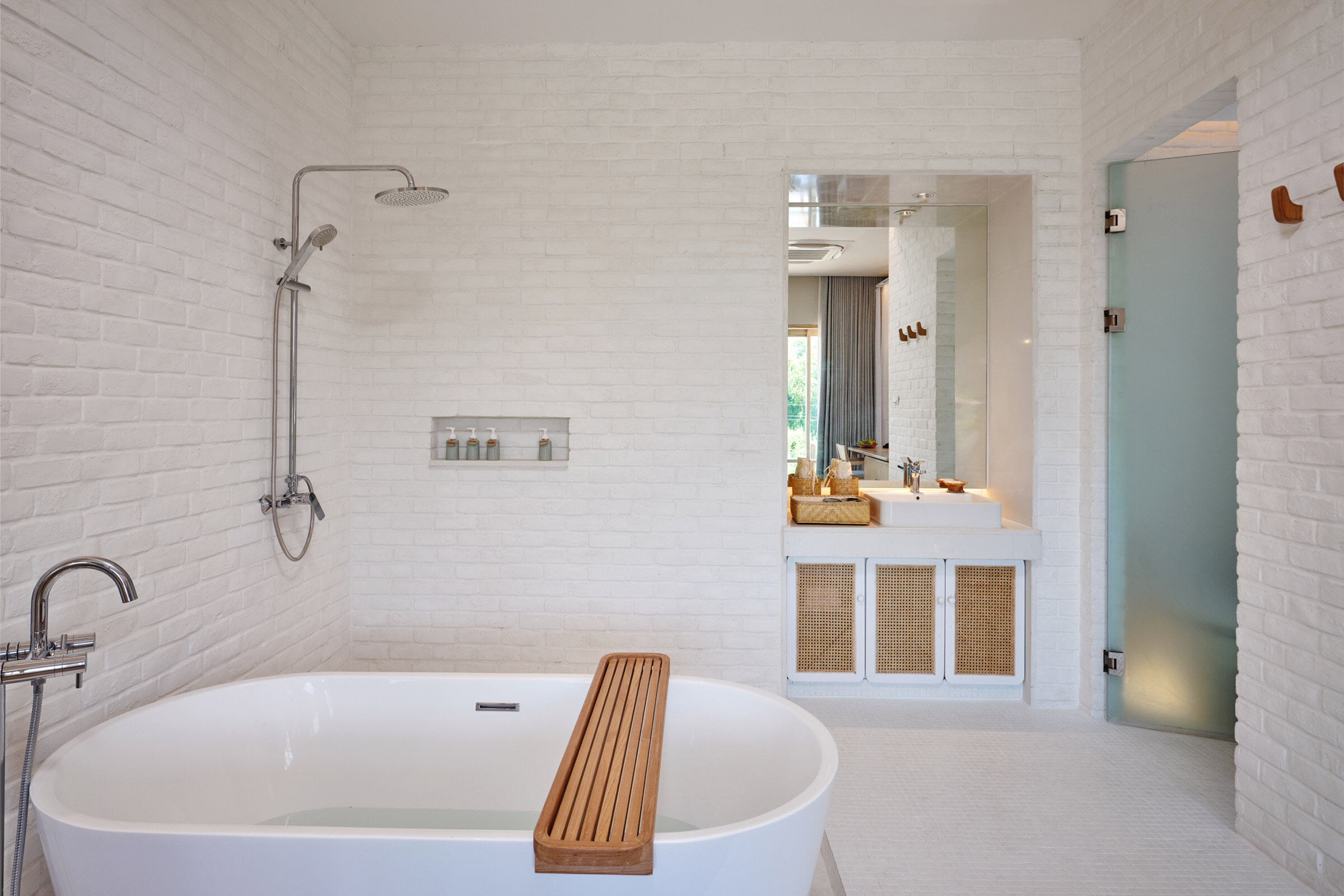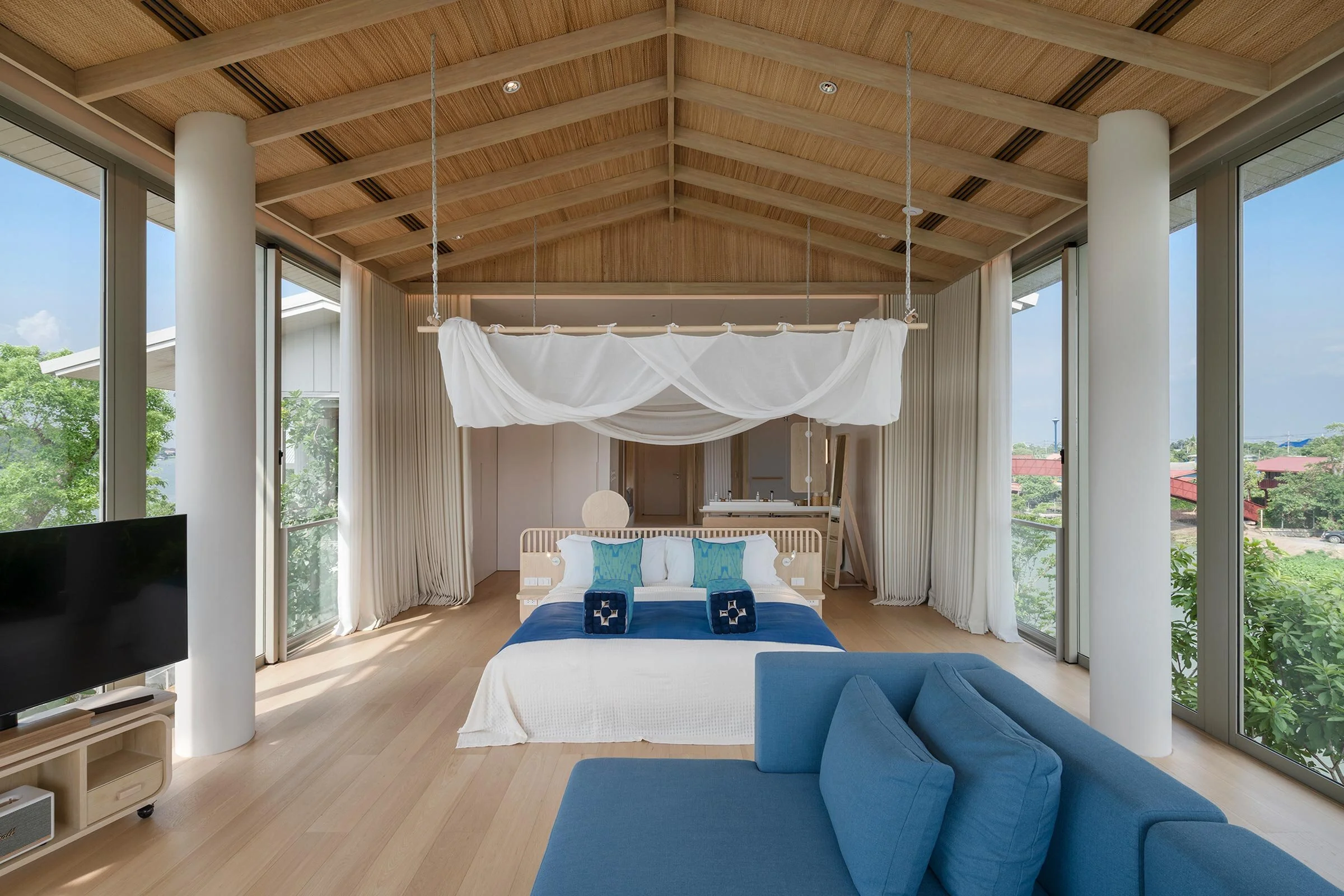An Island Retreat in Ayutthaya
Taking over the tip of a small island in the Chao Phraya River, new hotel sala bang pa-in — designed by Bangkok-based Department of ARCHITECTURE Co. — eschews historical references for a nod to contemporary village life
Envelope-pushing design hotels are no rare sight in Thailand's ancient capital. The red brick exteriors of Sala Ayutthaya and Baan Pomphet, both by Thai design studio onion, reference the city's crumbling forts and temples, while the pointy roofs of the Busaba hotel by Tidtang Studio mimic historical Thai dwellings. The latest addition to Ayutthaya's hotel scene, however, breaks with tradition to follow a boldly different approach.
Located on the tip of a small island in the Chao Phraya River, some 30 minutes downstream from Ayutthaya's historical heart, the new sala bang pa-in eschews temple-like features and historical references for an architectural nod to everyday Thai village life. ‘The architecture pays homage to the houses in the surrounding area,’ says architect Twitee Vajrabhaya, principal at Bangkok-based studio Department of ARCHITECTURE Co., who spearheaded the project. ‘Not to the traditional Thai dwellings from the past, but to the contemporary vernacular buildings around.’
The hotel’s entrance hides behind a village of the very style it imitates: a ragtag jumble of teakwood, low-pitched rooflines and clustered houses in all shapes and sizes. The stilted lobby building, the only part of the hotel on the mainland, blends in seamlessly with the surrounding houses. From here, a crimson red bridge leads guests across the water. ‘This red bridge, seemingly very distinct in its colour, actually blends into the village,’ Vajrabhaya says. ‘It speaks the same language as its colourful context and bridges the new architecture with the local tone and culture.’
Flanking both sides of the narrow island tip, the 24 rooms and villas occupy buildings of alternating heights and positioning with low-pitched roofs and grey cladding — much like the topsy-turvy layout of the village across the water. Some come with private plunge pools, others open onto snug wooden patios overlooking the river. Their interiors are more uniform: whitewashed brick and blonde wood furnishing, accented by Thai ceramics, wickerwork and wall panelling in sheer textiles.
Curved pathways and lush gardens soften the sharp lines of the triangular courtyard between the rooms. At its heart, a giant rain tree — carefully preserved during the construction process — anchors a seating pit with views of the river and the marble-tiled communal swimming pool. Round stepping stones lead to a canvas-covered restaurant that extends down to the riverbank, where days start with breakfast sets of dim sum, Thai noodle soup or banana pancakes, followed by lunches and dinners in which goong mae nam, the giant local river prawns, take centre stage.
Despite the hotel’s small footprint, smart spatial design manages to make it feel bright and spacious — an extension, rather than a separation, of the village on the shore. ‘Our main intention is to connect guests to the life of the Chao Phraya River,’ Vajrabhaya says. ‘Both in terms of the views and feel of the water, and in terms of the architectural character that connects with the villages along the river.’
Text / Chris Schalkx
Images / Wison Tungthunya





























